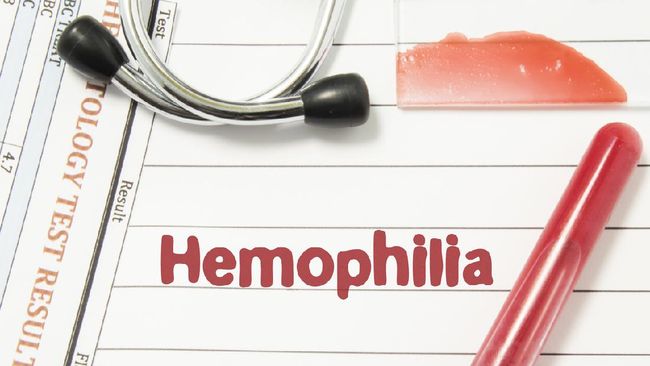Jakarta, CNN Indonesia –
Hemophilia is not it disease that can be cured. Prophylactic action is very important for hemophilia patients to prevent bleeding Furthermore.
Prophylaxis itself is an action to maintain health and prevent the spread of disease. In the case of hemophilia, prophylaxis means preventing bleeding.
In a study published in Sari Pediatri (2010), prophylaxis in patients with severe hemophilia can be done by administering clotting factor concentrates 2-3 times per week to prevent bleeding. Several studies have shown that prophylaxis will prevent bleeding and joint damage.
A pediatrician who treats hemophilia patients, Novie A Chozie, said that prophylaxis provides more advantages than therapy on demand. On demand means therapy given when there is bleeding, swelling in the joints, or bruising of the limbs.
“Patients with swelling have to be injected with drugs several times, 3-4 times. For prophylaxis, one injection. In a week it can be twice,” said Novie, in the World Hemophilia Day webinar some time ago.
In addition, repeated injections to relieve swelling during therapy on demand also risk of causing disability. “There can be disabilities, so that the child cannot walk. Of course this is not what we expected,” added Novie.
On the same occasion, Chairman of the Indonesian Hemophilia Society (HMHI), Professor Djajadiman Gatot, said that the implementation of prophylaxis is prioritized for pediatric hemophilia patients.
Children are still relatively active and their control over themselves is not as good as those of adults. Prophylaxis, said Djaja, will prevent children from experiencing heavy bleeding.
“This [profilaksis] in order to maintain a good child’s joints, good quality of life, “said Djadja.
Hemophilia itself is a blood clotting disorder caused by a deficiency of factors VII and IX. In hemophilia patients, any bleeding will last longer. This occurs due to a lack of protein which makes it difficult for blood to clot.
To date, there are around 2,500 people with hemophilia in Indonesia. However, Djadja suspects that the exact number will be more than this figure due to the lack of ability to detect or diagnose hemophilia.
“Many have not been detected. This is one of our obstacles. In terms of incidents, we should have a lot,” said Djaja.
(the / asr)
– .


